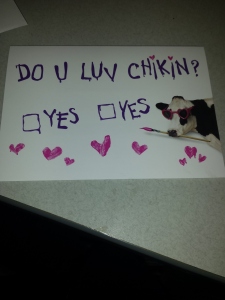We all know that famous quote from Apollo 13 “Failure is not an option” and we try so hard to live up to this saying.
In school, we study for hours on end to pass a test. Once graduated we take continuing education classes or read self-help books with the goal of being perfect or the best because we feel that our flaws, our imperfections cause us to fail in life.
And it’s not just on the personal level where we try to be perfect. At work, our goal is to succeed. We’re praised by our success. And the more successes we have, the more valuable we are to the company.
This is especially true working at an advertising agency since we’ve been hired to make the client’s business better. So when we test a new concept and it loses, we feel bad because we came up with an idea that cost the client money. And when we report on those failures, we feel ashamed.
After all, we’re the experts. We should know better.
In the back of our heads we know that the client is counting how many times we’ve failed. And we wonder “what is that magic moment when the client calls it quits and moves onto another agency that never fails”?
And while striving for perfection t is not a bad thing, this overriding drive to be the best makes us forget two important things: 1) we will fail and 2) we learn by failing.
In “Daring Geatly” Brene Brown quotes an executive who says:
“People believe they’re only as good as their ideas and that their ideas can’t seem too ‘out there’ and they can’t ‘not know’ everything. The problem is that innovative ideas often sound crazy and failure and learning are part of revolution. Evolution and incremental change is important and we need it, but we’re desperate for real revolution and that requires a different type of courage and creativity.”
This statement is so true. Agencies – and people – need the freedom, the trust of their clients to be innovative and try something different. And if that means failing every now and then, then so be it. Because that means we’re growing, we’re learning, and we’re becoming the best agency/person we can be.

